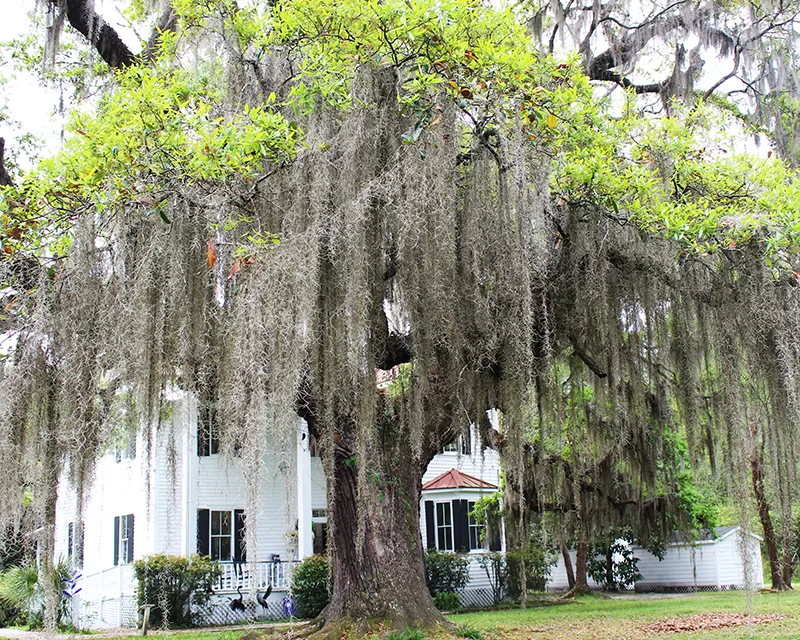Spanish Moss Trees
The pride of the coastal south

The South Carolina Lowcountry is draped in Spanish moss, just like the rest of the coastal old south. Sights of Spanish moss evoke childhood memories of spooky nights telling ghost stories with the cousins. My grandfather’s watermelon farm was located just outside Charleston. We would congregate there every summer and spend our days running along fire breaks, playing in the barn and sleeping on the porch. Spanish moss was a big part of these memories. It surrounded us and enveloped our very beings. It became a part of us as we played under the branches of live oaks that were lavishly decorated in the grey bearded plant.

Spanish moss is a flowering plant that is neither Spanish, nor a moss. It is a bromeliad that grows hanging from tree branches in a chain-like manner. The plant is particularly fond of live oak and bald cypress trees that grow in the lowlands, swamps and savannas of the south. Here the climate is warm enough and has a relatively high humidity. Native Americans called it “Itla-okla”, which means “tree hair.” The French renamed it “Spanish Beard” because it was reminiscent of the conquistadors. After time the name evolved into Spanish moss.

Yes, I did say Spanish moss is a flowering plant. It’s also related to the pineapple. Sounds strange, right? The flowers are tiny and inconspicuous. They are brown, green, yellow or grey. The plant propagates by seed or finds new locations when fragments break off and blow in the wind. Birds also help the process by carrying it from tree to tree.

Don’t worry, Spanish moss will not harm the trees. It has no roots and takes all its nutrients from the air. Even though Spanish moss grows on trees, it is not a parasite. The plant thrives on moisture in the air, sunlight, and particles found in the air. The plant is covered in tiny scales that trap and store water and nutrients. When full of water Spanish moss appears almost green. As it dries out it becomes a deeper grey.

There are two different legends about where this plant got its name. They are both told in many versions and change with each telling. The first one is the story of a beloved Indian princess who died. She was buried at the base of a live oak. Her husband cut off her braids and draped them in the tree. As time passed, the braids became grey and the wind carried the strands from tree to tree. They turned into Spanish moss to remind us of the love between the couple.

Another story involves the favorite daughter of an Indian chief and a Spanish conquistador. They were forbidden to see each other. As any good love story goes, they couldn’t stay apart, so the chief tied him high in the top of an ancient oak tree. The Spaniard told the chief that his love for the daughter would continue to grow even after death. His beard grew and became tangled in the branches. Until this very day, his beard still hangs in the trees.

Spanish moss reminds us of the deep south because it grows in subtropical humid southern locations. It also grows as far down as South America, but we like to take all the credit for this beautiful plant. Is anything more magical than an evening drive through the South Carolina Lowcountry where Spanish moss sways and fireflies intermingle in a choreographed dance that speaks to the soul?

For more information on the South Carolina Lowcountry visit https://southcarolinalowcountry.com/.





